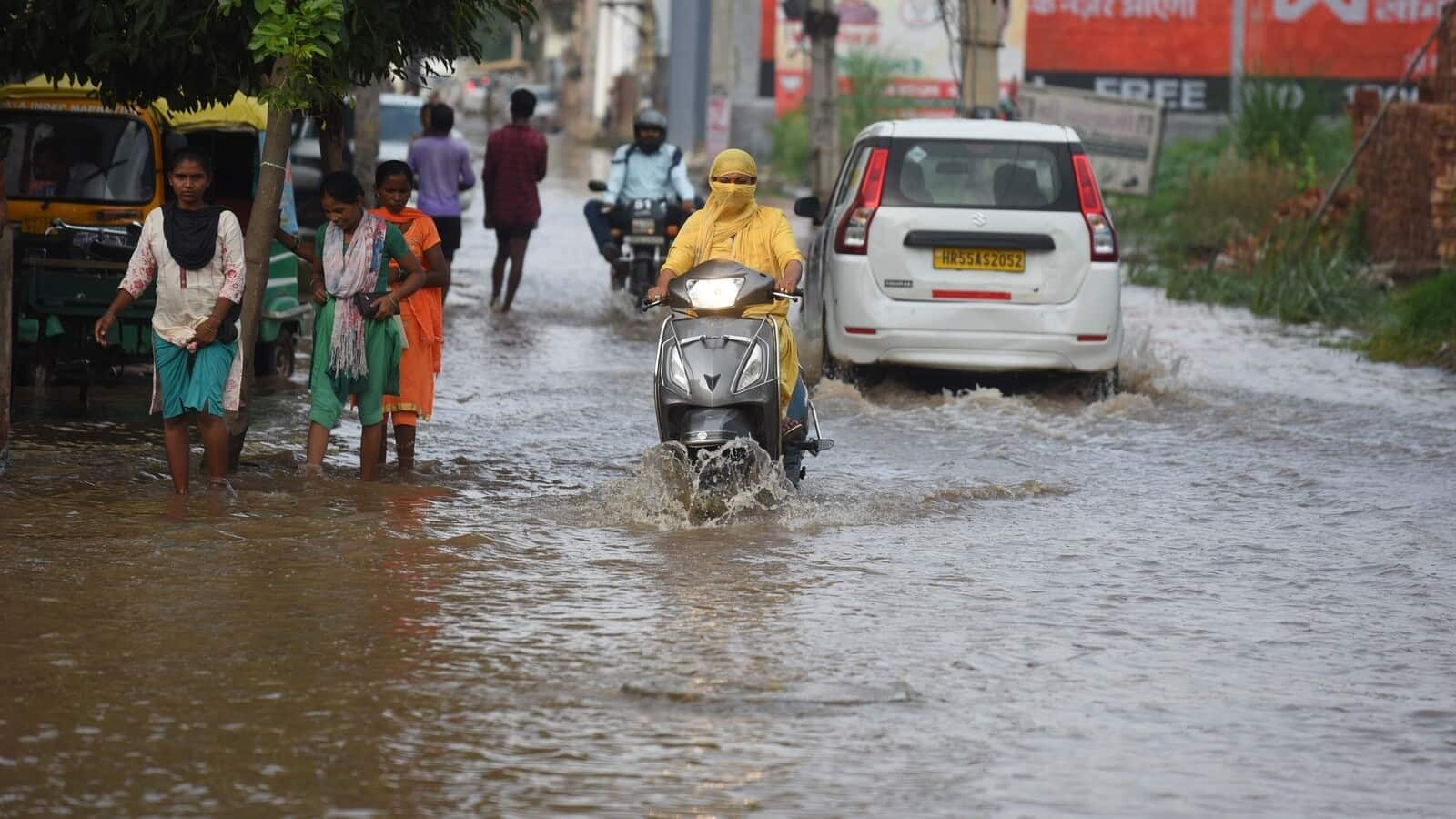
Waterlogging woes: Morning showers bring Delhi, Gurugram to a halt
What's the story
Residents of Delhi and Gurugram experienced moderate rain on Friday morning, resulting in waterlogging and traffic jams. The intense rainfall this week has highlighted issues with public infrastructure and ongoing problems with flooding and traffic congestion. The India Meteorological Department has forecast widespread light to moderate showers in the Delhi-NCR region until September 14.
Infrastructure woes
Infrastructure concerns rise amid persistent rainfall
Visuals depict commuters struggling through flooded areas, including Baprola, as they head to work or school. Other affected locations include RK Puram, Munirka, Najafgarh Road, and Moti Bagh. On Wednesday, Gurugram came to a halt due to inadequate drainage. Narhari Singh Bangar, Commissioner of the Municipal Corporation of Gurugram, told reporters that addressing the city's infrastructure limitations is crucial to resolving waterlogging and traffic issues.
Traffic disruption
Delhi's traffic woes worsen due to heavy rainfall
Delhi also faced similar issues, with 11.3mm of rain between 8:30am to 5:30pm on Thursday leading to major traffic jams and road blockages. Commuters were seen struggling through flooded areas like Baprola, RK Puram, Munirka, Najafgarh road, and Moti Bagh. The IMD has stated that the rain is expected to decrease in intensity over the weekend but will continue until September 14.
Weather influences
Weather patterns influenced by monsoon trough and cyclonic circulations
The IMD officials stated that the rainfall in both cities had increased due to a monsoon trough's proximity to Delhi-NCR. Additionally, two cyclonic circulations over southeast Rajasthan and Haryana, as well as a western disturbance, are impacting the region's rain patterns. Notably, this year, widespread flooding has affected states including Telangana, Andhra Pradesh, Gujarat, and Tripura, while most parts of the country are dealing with incessant rains.
Flooding causes
Flooding in India attributed to increased rainfall intensity
The flooding in various parts of India, including Delhi, can be attributed to an increase in rainfall intensity and magnitude this July and August compared to the last 30 years. Factors such as poor regulation on land use changes, disruption of natural drainages, high runoff from growing built-up areas, ineffective solid waste management policies that end up choking water bodies, and poor design of stormwater drains have been identified as reasons behind the flooding.